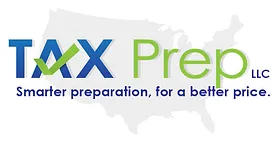Outsourcing CFO (Chief Financial Officer) services enables small and medium-sized businesses (SMBs) to access expert financial strategy without the high cost of a full-time executive. By hiring an outsourced CFO, businesses gain tailored guidance for growth and stability.
How does it work?
An outsourced CFO is a financial expert or firm hired part-time or on a contract basis to provide strategic financial management. Unlike a full-time CFO, with salaries often ranging from $150,000–$300,000 annually, an outsourced CFO charges hourly or monthly rates ($2,000–$10,000/month). They handle tasks like financial planning, forecasting, budgeting, cash flow management, and fundraising using cloud-based tools. For SMBs, this delivers C-suite expertise cost-effectively, with CFOs collaborating with owners or accountants to focus on high-impact areas like profitability or investor relations.
Key Benefits of Outsourcing CFO Services
- Cost Savings: Outsourcing cuts costs by 50–80% compared to a full-time CFO, as businesses pay only for needed services. For example, a $1M-revenue retail startup might spend $5,000/month on an outsourced CFO versus $20,000/month for a full-time hire, saving $180,000 yearly.
2. Scalability: Outsourced CFOs adjust to business needs, offering 10 hours/month for startups or 40 hours for scaling firms.
3. Improved Budgeting: CFOs create data-driven budgets aligned with business objectives, using forecasting to optimize resources.
Practical Examples of Outsourced CFO Impact
- Cash Flow Management: A $2M-revenue manufacturer faces seasonal cash flow issues. The CFO negotiates longer supplier terms and secures a credit line, real-time dashboards via tools like QuickBooks ensure positive cash flow, avoiding layoffs.
Outcome: Cash reserves grow by 20%, eliminating overdraft fees.
- Fundraising: A SaaS startup needs $500,000 in seed funding. The CFO builds financial models and pitch decks, coaching the founder for investor meetings. The startup secures $600,000, exceeding its goal.
Outcome: Revenue grows 30% in six months with accelerated product development.
Addressing Common Concerns
Loss of Control: Owners fear external CFOs may not align with their vision.
- Solution: CFOs act as advisors, collaborating closely with owners via transparent reporting. Contracts can define boundaries.
- Mitigation: Choose an industry-experienced CFO with a compatible communication style.
Data Security: Sharing financial data raises privacy risks.
- Solution: Reputable CFOs use secure platforms (e.g., Xero) with encryption and NDAs.
- Mitigation: Verify security protocols and request references.
Lack of Commitment: Outsourced CFOs may lack the dedication of full-time staff.
- Solution: Experienced CFOs prioritize results for repeat business and reputation.
- Mitigation: Select providers with long-term client relationships and clear deliverables.
Tips for Choosing a Reliable Outsourced CFO Provider
Verify Industry Experience: Choose a CFO familiar with your sector (e.g., healthcare, tech) for tailored solutions.
- Example: A healthcare startup needs a CFO versed in compliance.
Check Credentials and References: Confirm qualifications (e.g., CPA) and request client testimonials.
- Example: References from similar-sized businesses validate reliability.
Evaluate Technology: Ensure the CFO uses cloud-based tools compatible with your systems.
- Example: AI-driven forecasting tools enhance projection accuracy.
Assess Communication: Select a CFO whose updates match your preference (e.g., weekly calls, email summaries).
- Example: Busy founders may prefer concise reports.
Start Small: Test with a short-term project, like budgeting, before long-term commitment.
- Example: A three-month cash flow project evaluates fit.
Conclusion
Outsourcing CFO services provides SMBs with expert financial strategy at a lower cost, offering cost savings, scalability, and better budgeting. From stabilizing cash flow to securing funding, outsourced CFOs drive growth. By addressing concerns like control and security and choosing a reliable provider, businesses can thrive in 2025.
This article originally appeared on https://acgdept.com



